Quick review, very quick, I used the Harris Benedict formula to calculate the amount calories required to sustain weight, lose weight or gain weight. I then compared the formula to actual calories by using a metabolic cart.
 As you will remember, if not, a quick look at the graphs will refresh your memory, you will see the difference in actual v calculated. This is why we need to track our calories, especially if you’re either dropping weight to quick or not dropping quick enough, both of which will have a longer term issue, which isn’t for today’s discussion.
As you will remember, if not, a quick look at the graphs will refresh your memory, you will see the difference in actual v calculated. This is why we need to track our calories, especially if you’re either dropping weight to quick or not dropping quick enough, both of which will have a longer term issue, which isn’t for today’s discussion.
So we know the calories and from there we calculate the protein, fats and carbohydrates. The amount of which is dependent on your activity level and sport and more importantly your desired outcome.
For today’s example will use the middle graph so we know I burn 1888kcals x my activity level of moderate exercise which is 1.55, giving us a total 2,926kcals, minus 500kcals as I want to drop some weight. So the next part is worked out on 2,426kcals per day.
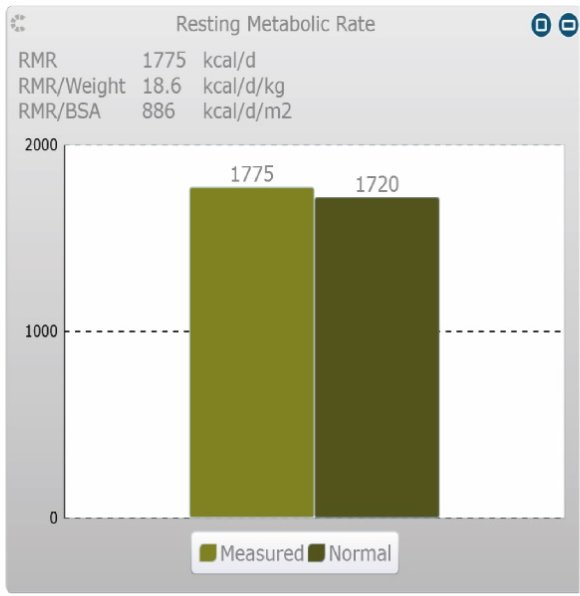 I work the protein out on 2g of protein per kg of body weight (2g/kg bw), and if you remember the example client was a 70kg male, so this gives us 140g of protein per day, we will then work out fats at 30% of total calories, this gives us 81g of fats (30% of 2426 is 727.8, divide 727.8 by 9 as there are 9kcals per 1g of fat).
I work the protein out on 2g of protein per kg of body weight (2g/kg bw), and if you remember the example client was a 70kg male, so this gives us 140g of protein per day, we will then work out fats at 30% of total calories, this gives us 81g of fats (30% of 2426 is 727.8, divide 727.8 by 9 as there are 9kcals per 1g of fat).
From here we need to know how many carbs per day I need, this is calculated by the following:
Protein 140g x 4 (the amount of kcals per 1g) = 560kcals
Fats 81g x 9 = 729kcals
560+729=1289kcals
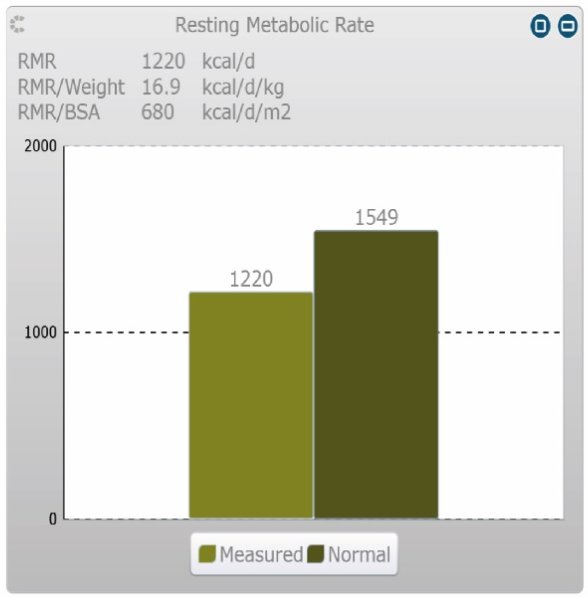 Totals calories required 2426 minus 1289 = 1137kcals left for carbs. Divide 1137kcals by 4 = 284g of carbs per day.
Totals calories required 2426 minus 1289 = 1137kcals left for carbs. Divide 1137kcals by 4 = 284g of carbs per day.
So this is our starting point for our diet, total calories 2426, made up of 140g of protein, 284g of carbs and 81g of fats. If this doesn’t have the desired outcome we can manipulate these numbers but we do need a starting point.
So this is our calories outlined, now if we want to lose body fat, we need to know that we are actually using predominately fat at rest for energy.
Again, we can use results from the met cart to show this.
Knowing your calorie requirement is one thing, but are you actually using body as energy….
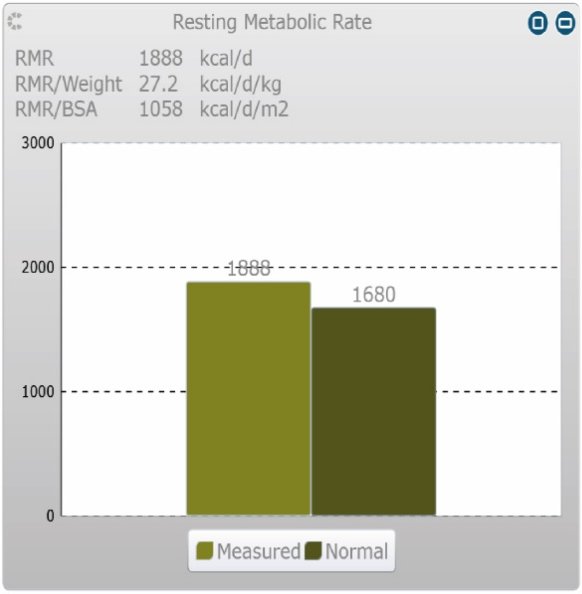 If you are struggling to lose any body fat, the next part could be of interest to you….
If you are struggling to lose any body fat, the next part could be of interest to you….
When you’re sat around doing nothing or sat at the desk we are still using energy, this is when we want to make sure we are using fat as energy, most of us exercise 3 times a week at best, so that’s 3 hours from the whole week. You would benefit more if you exercise more, but lets focus on the the majority of the population.
This is where it gets interesting, so we know how many calories we need, but we want to be using fat as energy for a much time as possible, and we are bascially at rest most of the day and night.
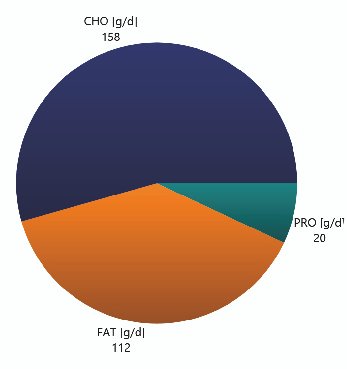 The pie chart below show us the usage of fat, carbs and protein used for energy at rest by client no.1. They are also the same client that needs less calories than the formula.
The pie chart below show us the usage of fat, carbs and protein used for energy at rest by client no.1. They are also the same client that needs less calories than the formula.
So from the chart we can see that the client uses prodominently carbohydtaes at rest, too much, so not only was she over eating but she was utilising carbs at rest and not fats, double whammy, no wonder we had issues losing weight.
From here we modifed her diet and training, albeit due to her being a busy mum, the gym was not an option, so a fasted speed walk in the morning was reccomended. The rationale for this, no food should make the body use stored energy, the body should use prodminently use the fat metabolism for this level of activity.
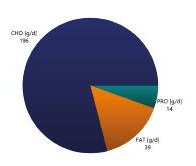 This worked for her, how do we know, she started dropping body fat, this is the clearest indicator and the results she wanted, and that’s all that is important to weight loss clients.
This worked for her, how do we know, she started dropping body fat, this is the clearest indicator and the results she wanted, and that’s all that is important to weight loss clients.
The next pie chart is from the client who was about right with the calorie match, formula verus measured. This is getting closer to what we want to see, more fat being used at rest for energy. Does this have an effect on what energy source is used when we exercise at different intensities, this I cant answer as we didn’t perform the test during exercise, but we know that exercise and nutrition can change which substrate is used at rest. From the questionaires completed by the clients I do that this client does eat a higher fat diet, and not good fats and too much, hence the client is over weight.
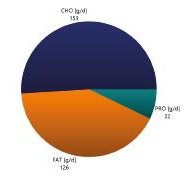 Could a higher fat diet be the reason she is burning more fat at rest?, thats a question I cant answer.
Could a higher fat diet be the reason she is burning more fat at rest?, thats a question I cant answer.
Getting closer to ideal, so this is my actual usage of fat for energy (in orange) at rest, and we already know I need more calories at rest than the formula suggests, 1888 versus around 1600, all good, I can eat more calories than I tought, and I’m burning a good portion of fat at rest.
I was exercising 3 times a week, which was a body building protocol, but if pushed for time I would do a high intensity interval session that took around 20 minutes.
I do still have some body fat to burn, not brave enough to show you, with a bit of luck (staying injury free), good nutrition and continued regular exercise, increasing to 4 times a week, my pie chart will look evan better.
Just remember, if its working don’t change what you’re doing, once it stops, its time to change, if its not working then change but give it 4 weeks and keep a good exercise and food diary and adjust one thing.
For example, change your exericse reguime from a resistant style programme to an interval style programme or change when you eat your startchy carbs, you could even try a going for an early morning walk before breakfast. As precaution just take a banana with you incase you do feel light headed.
Always consult your doctor before undertaking any exericse or change of eating habit.
..remember ‘ConsistantKey’
Kevin Dobson
Kevin has been in the fitness industry for almost a decade. Nutrition is Kevin’s biggest passion, he feels Nutrition has the greatest impact on any training plan, beit weight loss, muscle gain or performance. Having completed a Post Graduate Degree in Sports and Exercise Nutrition, he now feels more equipped and confident in his advice.
Facebook: https://www.facebook.com/BeyondFitness/

